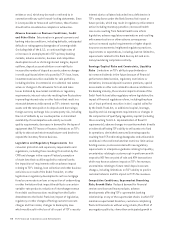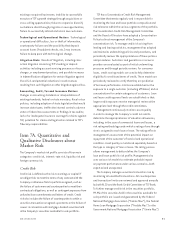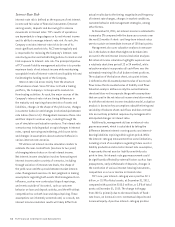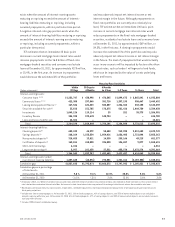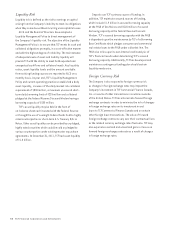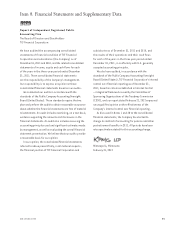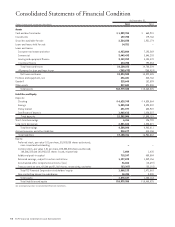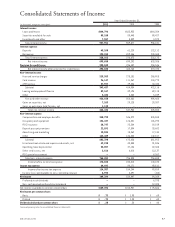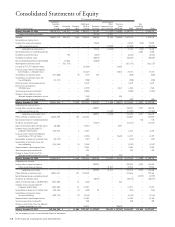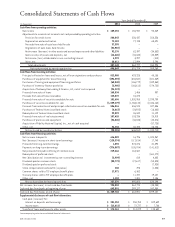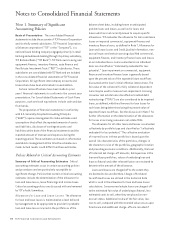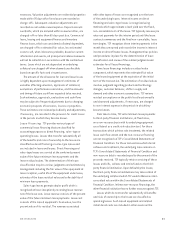TCF Bank 2011 Annual Report Download - page 69
Download and view the complete annual report
Please find page 69 of the 2011 TCF Bank annual report below. You can navigate through the pages in the report by either clicking on the pages listed below, or by using the keyword search tool below to find specific information within the annual report.existing or acquired businesses; inability to successfully
execute on TCF’s growth strategy through acquisitions or
cross-selling opportunities; failure to expand or diversify
our balance sheet through programs or new opportunities;
failure to successfully attract and retain new customers.
Technological and Operational Matters Technological
or operational difficulties, loss or theft of information,
counterparty failures and the possibility that deposit
account losses (fraudulent checks, etc.) may increase;
failure to keep pace with technological change.
Litigation Risks Results of litigation, including class
action litigation concerning TCF’s lending or deposit
activities including account servicing processes or fees or
charges, or employment practices, and possible increases
in indemnification obligations for certain litigation against
Visa U.S.A. and potential reductions in card revenues
resulting from such litigation or other litigation against Visa.
Accounting, Audit, Tax and Insurance Matters
Changes in accounting standards or interpretations of
existing standards; federal or state monetary, fiscal or tax
policies, including adoption of state legislation that would
increase state taxes; ineffective internal controls; adverse
state or Federal tax assessments or findings in tax audits;
lack of or inadequate insurance coverage for claims against
TCF; potential for claims and legal action related to TCF’s
fiduciary responsibilities.
Item 7A. Quantitative and
Qualitative Disclosures about
Market Risk
The Company’s market risk profile consists of four main
categories: credit risk, interest-rate risk, liquidity risk and
foreign currency risk.
Credit Risk
Credit risk is defined as the risk to earnings or capital if
an obligor fails to meet the terms of any contract with the
Company or otherwise fails to perform as agreed, such as
the failure of customers and counterparties to meet their
contractual obligations, as well as contingent exposures from
unfunded loan commitments and letters of credit. Credit
risk also includes the failure of counterparties to settle a
securities transaction on agreed-upon terms or the failure of
issuers in connection with mortgage-backed securities held
in the Company’s securities available for sale portfolio.
TCF has a Concentration Credit Risk Management
Committee that meets regularly and is responsible for
monitoring the loan and lease portfolio composition and
risk tolerance within the various segments of the portfolio.
The Concentration Credit Risk Management Committee
and the Board of Directors have adopted a Concentration
Policy to direct management of the Company’s
concentration risk. To manage credit risk arising from
lending and leasing activities, management has adopted
and maintains underwriting policies and procedures, and
periodically reviews the appropriateness of these policies
and procedures. Customers and guarantors or recourse
providers are evaluated as part of initial underwriting
processes and through periodic reviews. For consumer
loans, credit scoring models are used to help determine
eligibility for credit and terms of credit. These models are
periodically reviewed to verify that they are predictive
of borrower performance. Limits are established on the
exposure to a single customer (including affiliates) and on
concentrations for certain categories of customers. Loan
and lease credit approval levels are established so that
larger credit exposures receive managerial review at the
appropriate level through the credit committees.
Management continuously monitors asset quality
in order to manage the Company’s credit risk and to
determine the appropriateness of valuation allowances,
including, in the case of commercial loans and leases, a
risk rating methodology under which a rating of one through
nine is assigned to each loan or lease. The rating reflects
management’s assessment of the potential impact on
repayment of the customer’s financial and operational
condition. Asset quality is monitored separately based on
the type or category of loan or lease. The rating process
allows management to better define the Company’s
loan and lease portfolio risk profile. Management also
uses various risk models to estimate probable impact
on payment performance under various scenarios, both
expected and unexpected.
The Company manages securities transaction risk by
monitoring all unsettled transactions. All counterparties
and transaction limits are reviewed and approved annually
by both ALCO and the Bank Credit Committee of TCF Bank.
To further manage credit risk in the securities portfolio,
99.9% of the securities held in the securities available for
sale portfolio are issued and guaranteed by the Federal
National Mortgage Association (“Fannie Mae”), the Federal
Home Loan Mortgage Corporation (“Freddie Mac”) or the
Government National Mortgage Association (“Ginnie Mae”).
512011 Form 10-K











